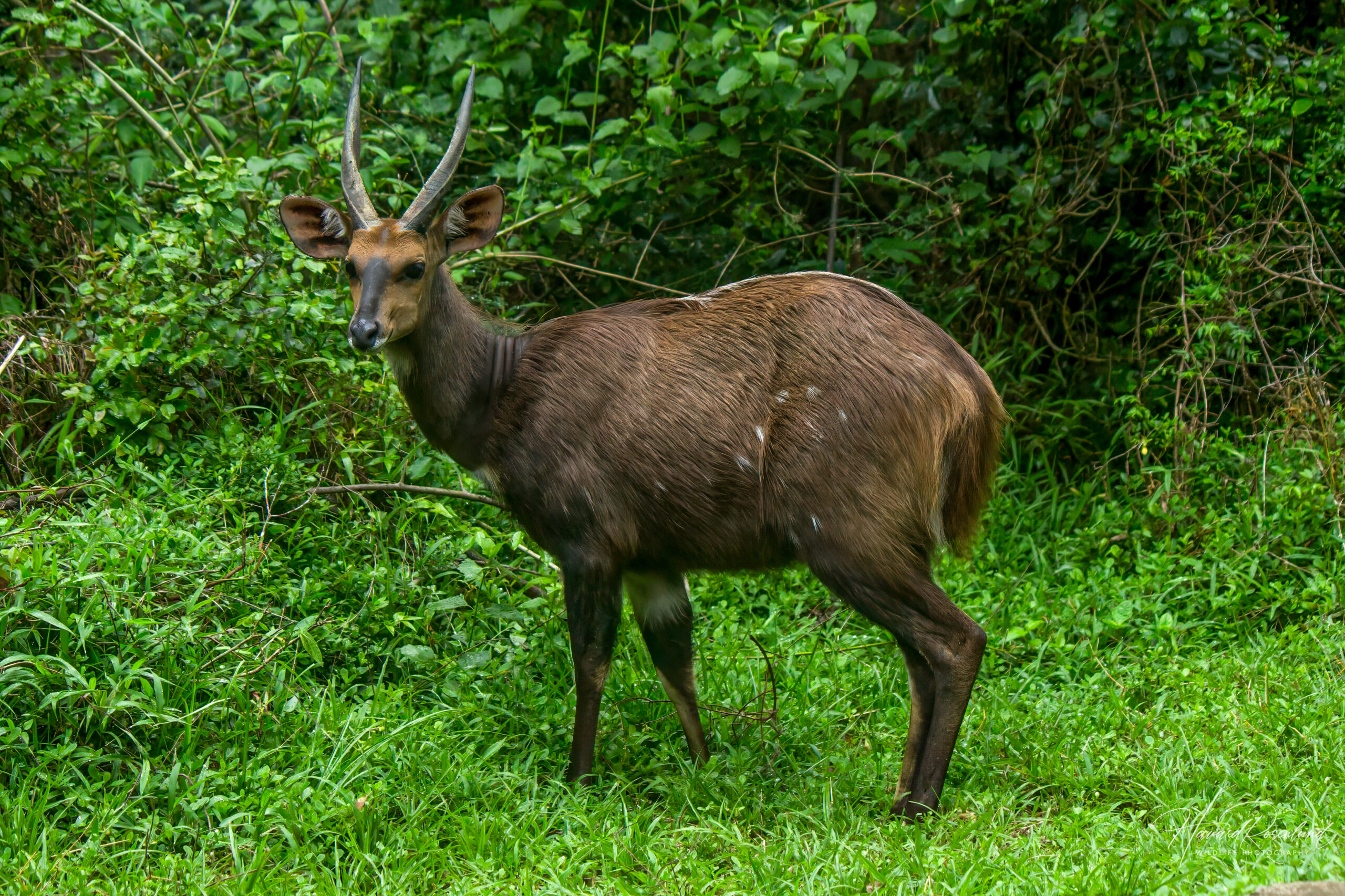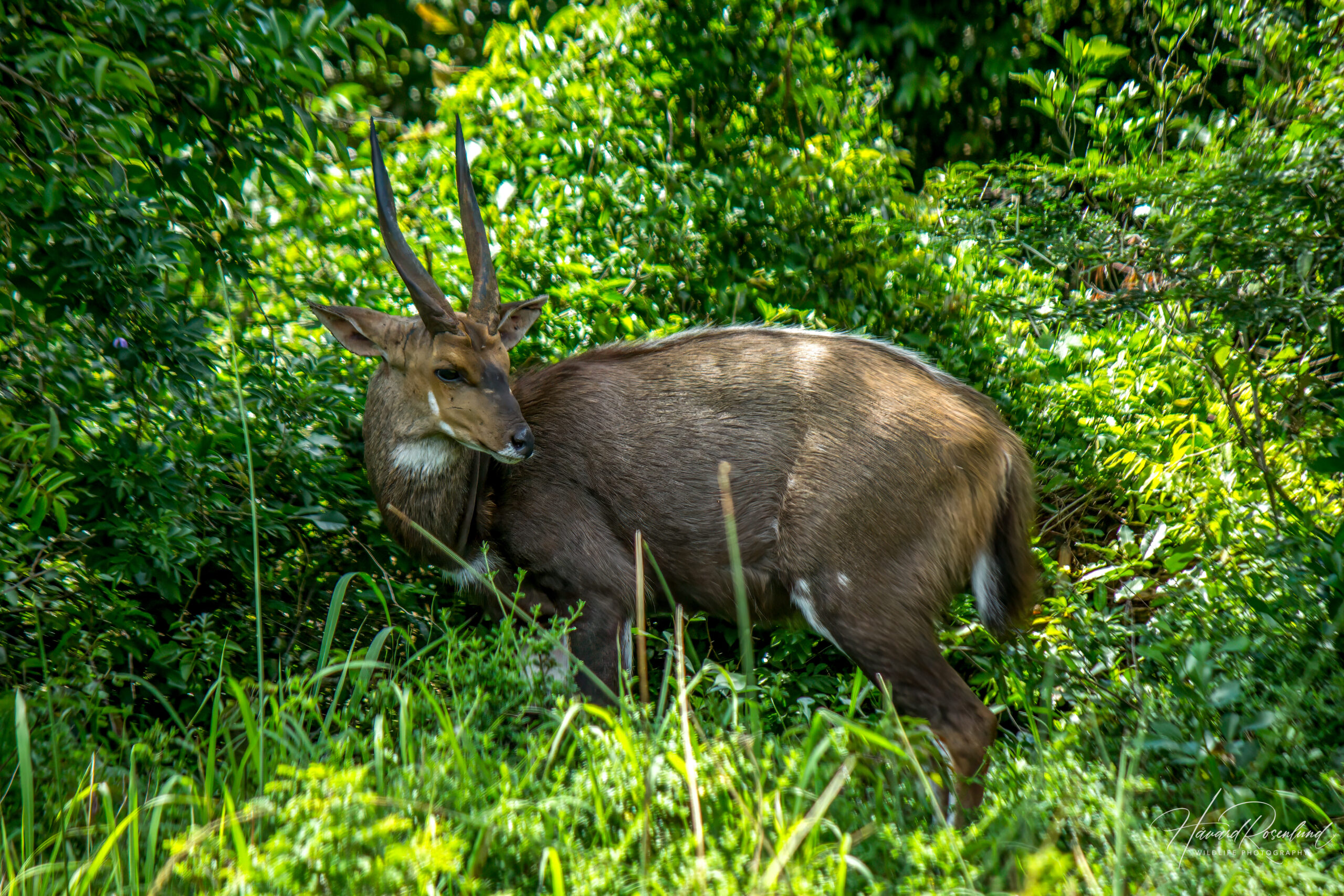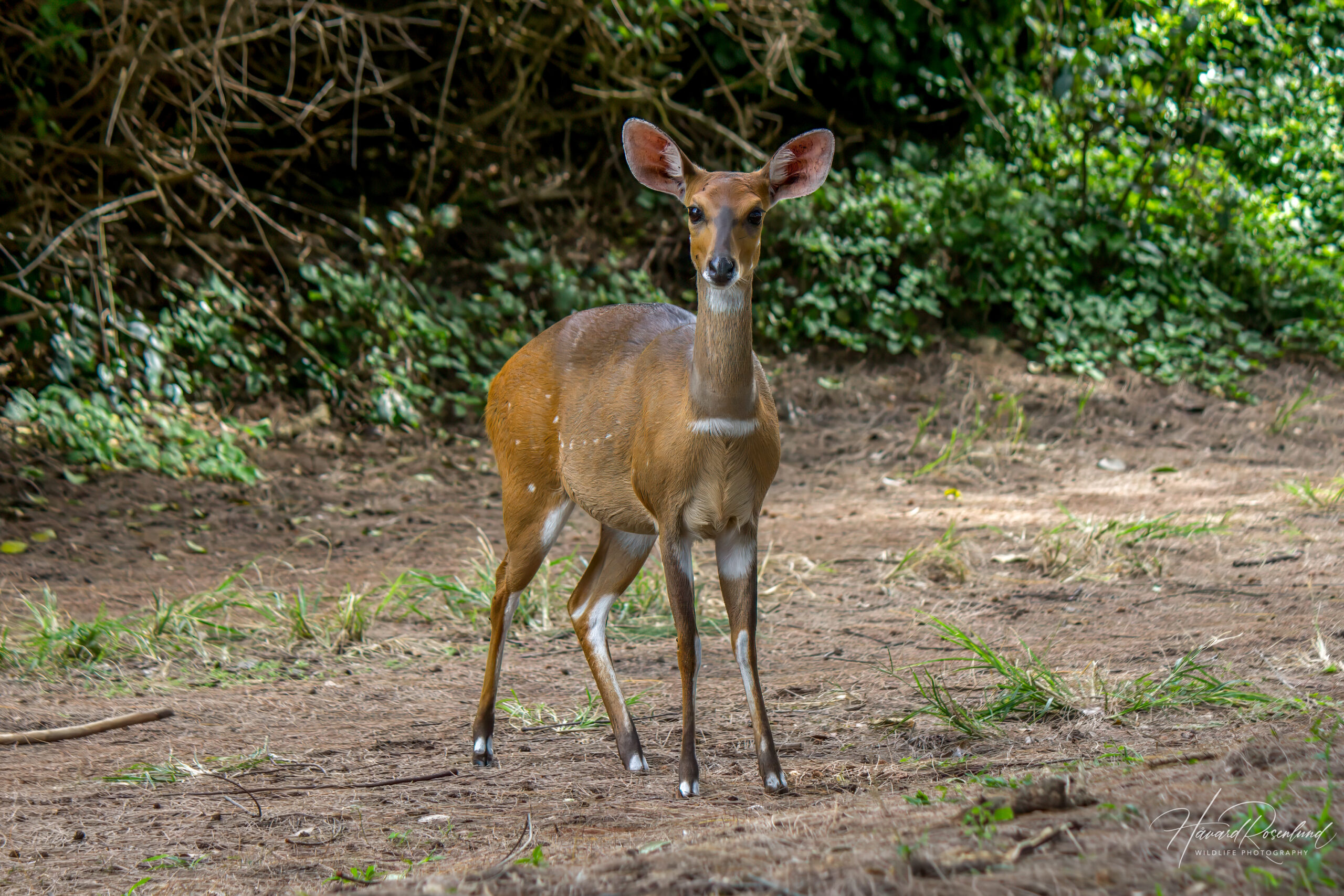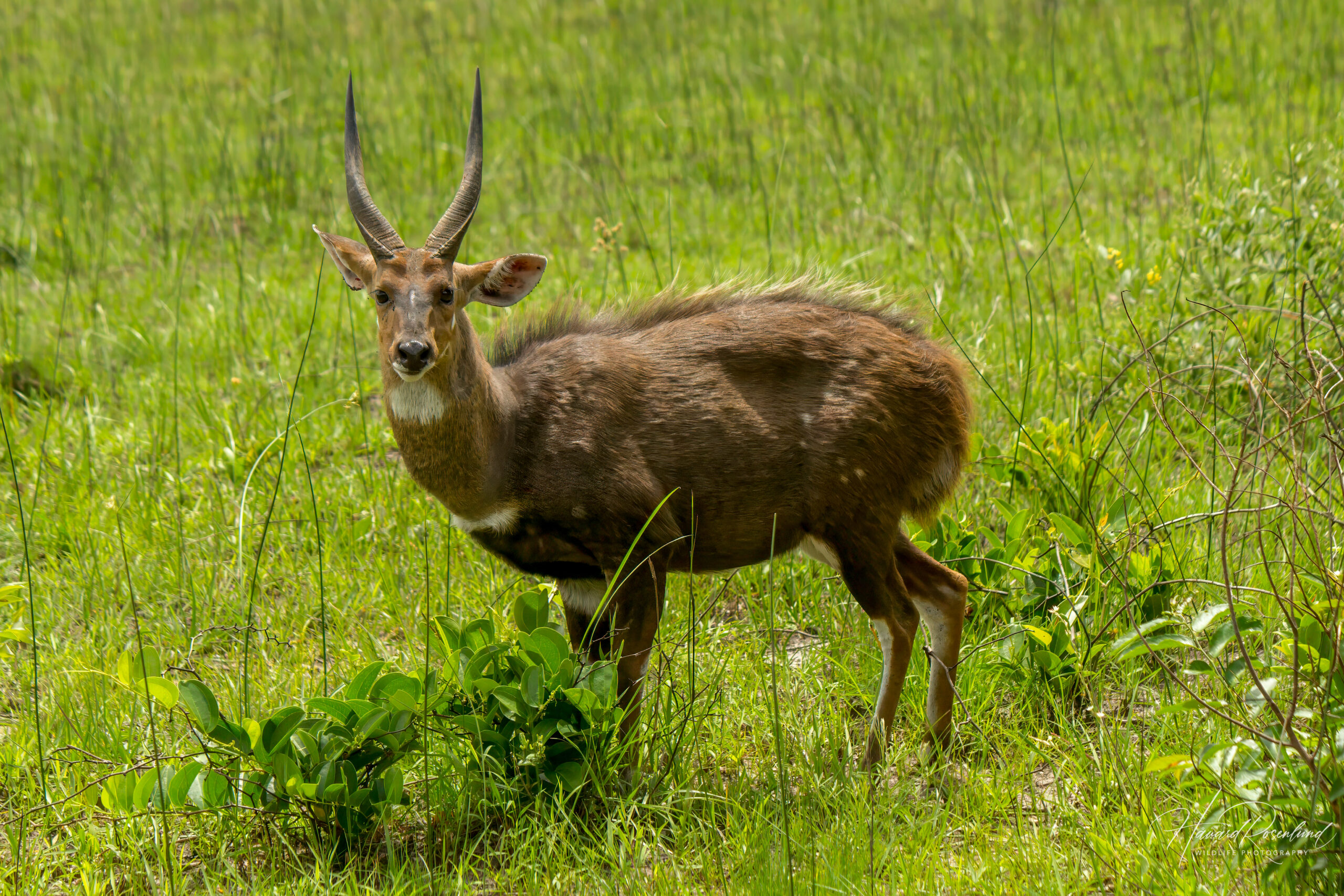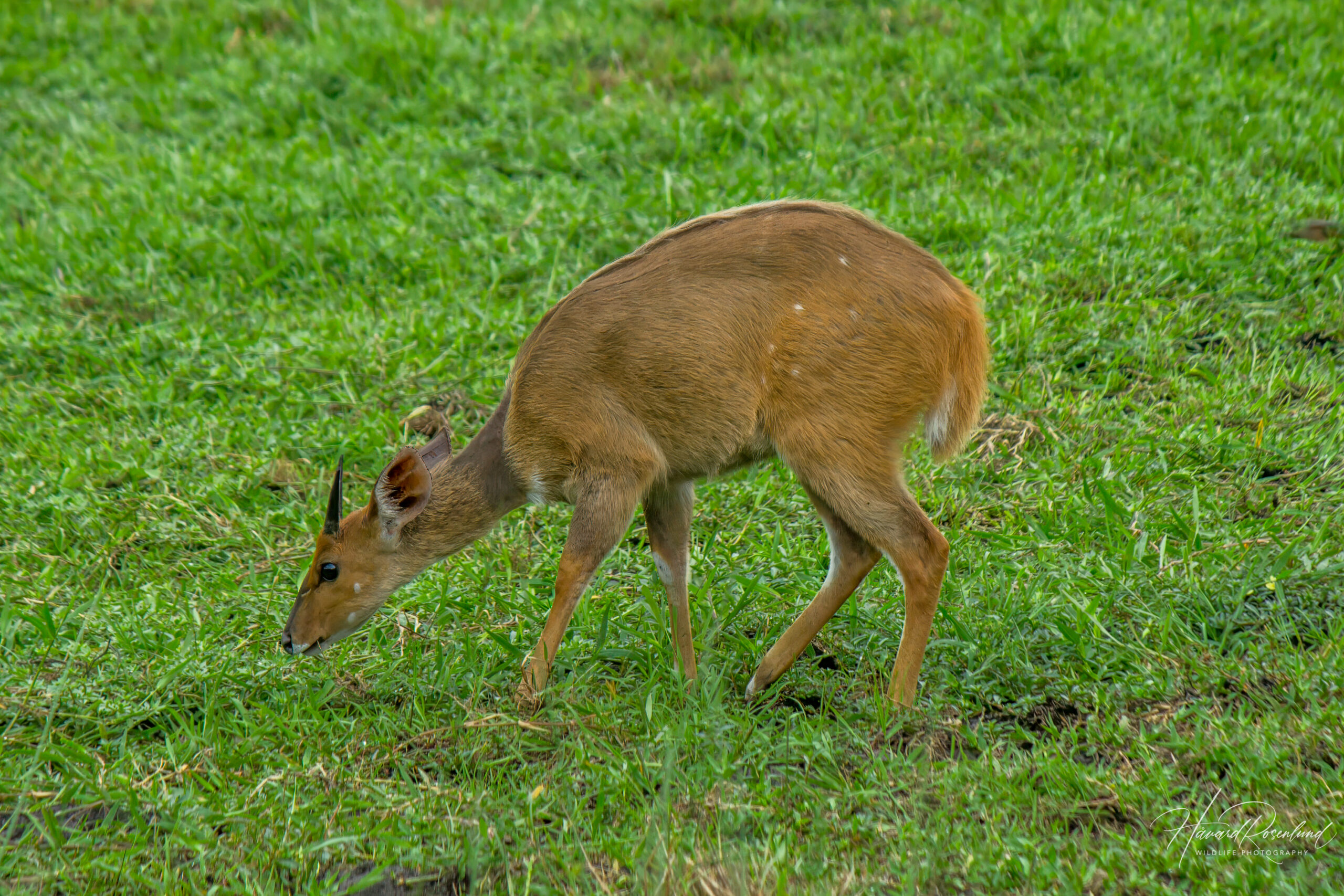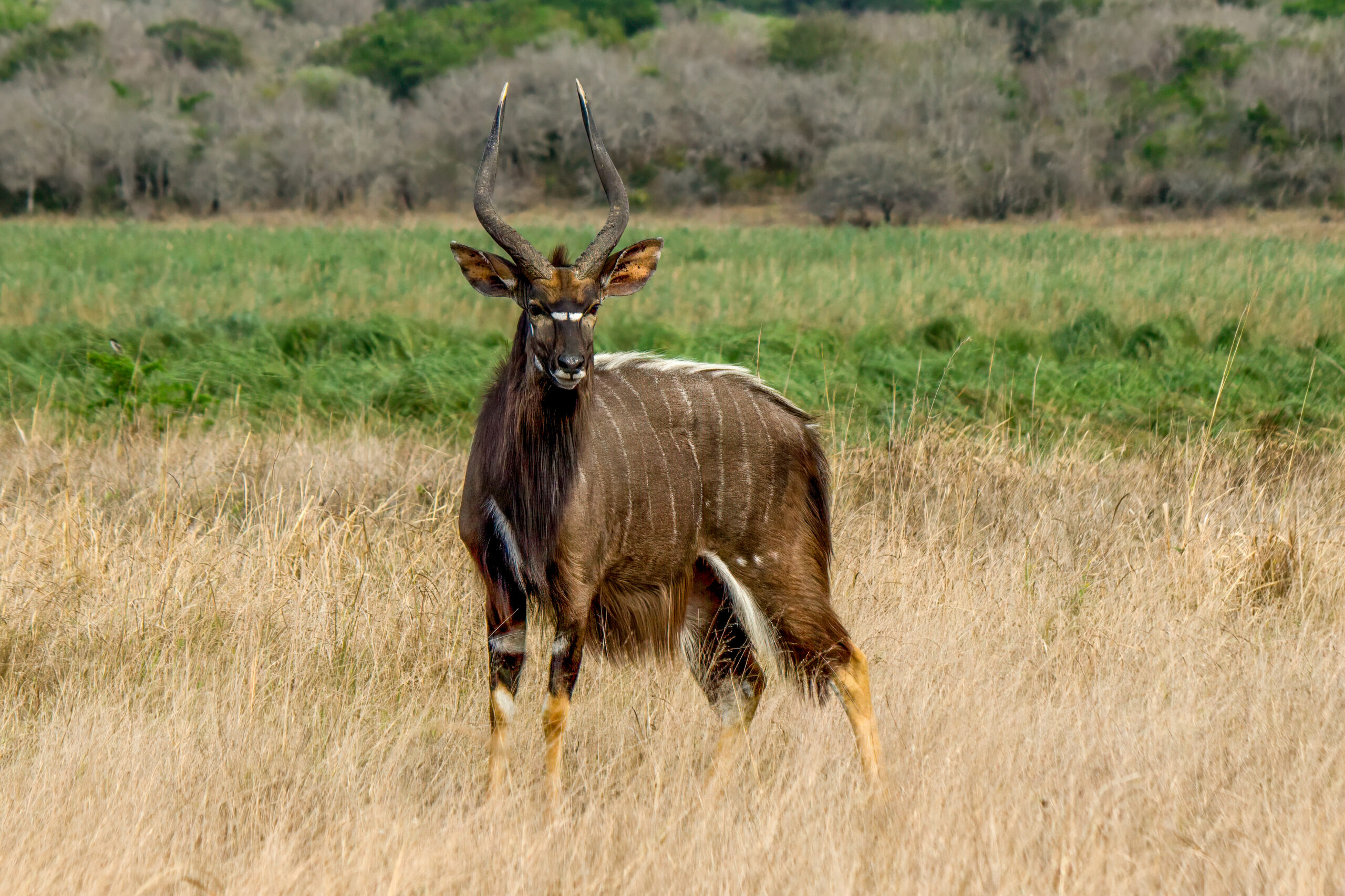Cape Bushbuck
(Tragelaphus sylvaticus)
Description
The bushbuck has been considered the most widespread of all African antelopes. Recent genetic findings, however, have resulted in the bushbuck being split into two separate species; the harnessed bushbuck (Tragelaphus scriptus) and the Cape bushbuck (Tragelaphus sylvaticus). The harnessed bushbuck is smaller than the cape bushbuck and is found from Senegal in the west to Ethiopia and Eritrea in the East, and south to Angola and southern DRC. The Cape bushbuck is the most studied species and is found from the Cape in South Africa up to Angola in the west and up through the east side of the continent towards Ethiopia and Somalia.
The harnessed bushbuck has the most prominent markings on its body and has a clear horizontal line, as well as spots and vertical stripes. The Cape bushbuck is a lot more varied in coloration throughout its range. Only the genetically oldest populations of Cape bushbuck have clear markings, but none have the distinct horizontal line which is instead broken up into spots. Some Cape bushbuck populations have almost no markings at all.
Both bushbuck species are sexually dimorphic, and only the male has horns. Male and female harnessed bushbuck have similar coats and markings, whereas Cape bushbuck is more dimorphic, with the males often being dark to greyish brown and females more reddish-brown. Both sexes of Cape bushbuck are born similar, but males change as they mature, and markings often fade some with age.
A Cape bushbuck can stand up to 90 cm (36 in) to its shoulder and weigh 45-80 kg (100-175 lb). Size depends on the sex, and males are typically larger. Horns can reach about half a meter in length, and there is only one twist on the horn of a mature adult male. Horns will sprout at the age of 10 months and a male will reach maturity upon gaining his first twist. All bushbucks have many white patches on their body, even those without many other markings. Prominent ones are on their legs and neck.
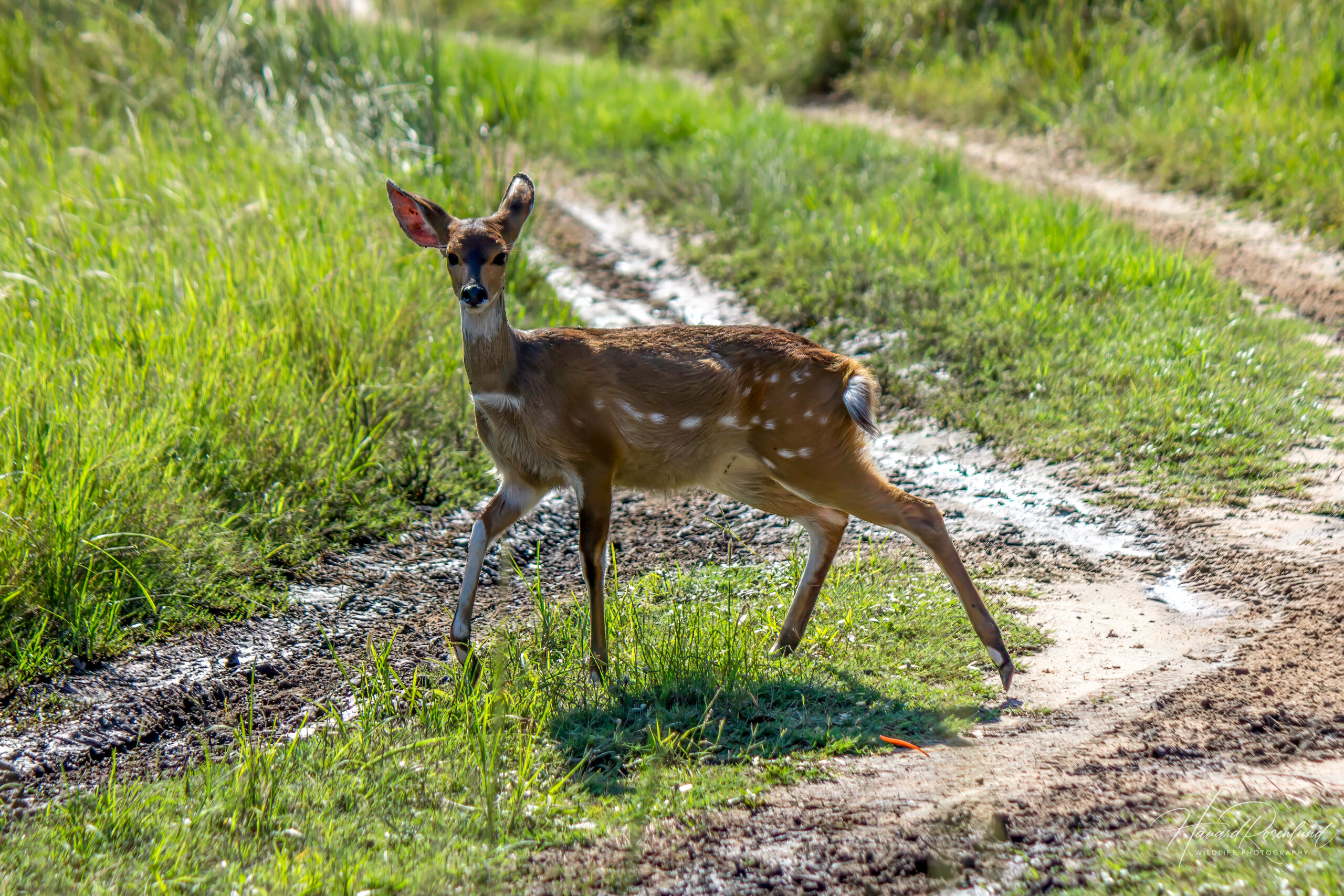
Female Cape bushbuck. Notice the markings on the coat and the broken up spotted horizontal line @ Tembe Elephant Park.
Diet & habitat
Bushbucks are known to be very shy and will spend most of their time in thick vegetation. They are found in a wide variety of habitats, including rainforests, montane forests, savanna, and woodland. They prefer areas with good cover for protection and hiding, as they are known to be clumsy runners.
Bushbucks are mostly active early in the morning, late in the evening and into the night. In places with increased human presence and disturbance bushbucks often become exclusively nocturnal. They are mainly browsers and eat mostly leaves from low branches and bushes, though they do include other plant matter in their diet.
Social behavior & reproduction
Bushbucks are generally solitary animals, but they can live in pairs. They have small home ranges, which they often share with other individuals. Males will try to avoid areas belonging to rivalling males, and older males are often seen as more dominant. Disputes between males are often sorted by intimidation displays where males tiptoe around each other while trying to make themselves look big. If they end up fighting, it can potentially end with death or severe injury.
When a female is in heat a male will guard the area from intruding males. After a gestation period of six months, she will normally give birth to a single calf. To avoid predator detection the female will eat the dung of her own calf and will keep it hidden for the first four months.
Predation
The bushbuck is preyed on by all of the large carnivores, and it is one of the preferred prey species of leopard. When attacked a bushbuck will try to stand its ground, and a male can turn very dangerous if injured. Amongst hunters the male bushbuck is known as the “poor man’s buffalo” because of its tendency to stay and fight rather than try to escape. Indeed, some hunters have actually been killed by bushbuck.
Status
The divide into two separate species is quite recent and the bushbuck is only considered as one species on the IUCN Red List. Both species are quite widespread and common throughout their range. The bushbuck is listed as least concern at the moment, and there are no reasons to believe both the harnessed bushbuck and the Cape bushbuck should be listed differently.




